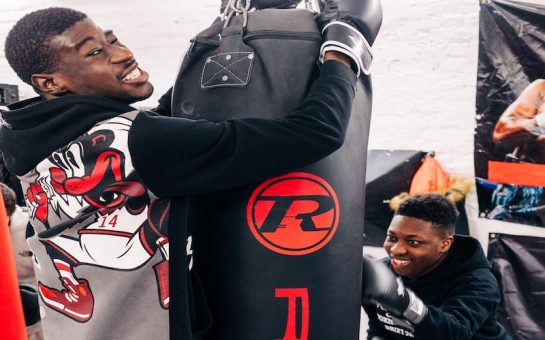By SWL staff
April 3 2020, 12.25
Follow @SW_Londoner
It’s time to test your knowledge on CBD; how much do you know? In this article, we’re going to cover seven CBD facts that you might not have heard about.
These facts are not only important to help combat the spread of stigma, but also to promote a healthier understanding of what CBD is and how it works.
Time to throw back the curtain and take a closer look at one of this decade’s most influential trends. With an industry worth billions of dollars, CBD is on the rise and seemingly here to stay.
Here are seven CBD facts explained.
1. CBD comes from hemp
CBD is a cannabinoid that’s derived from the Cannabis plant, but did you know there are several strains of the plant itself?
Hemp is just one strain, which contains higher concentrations of the CBD compound and lower concentrations of THC. According to the law, hemp must contain less than 0.3% THC to be grown and harvested.
What’s the difference, you ask? Well, for starters, CBD isn’t going to make you see things or feel lovey-dovey. It doesn’t produce the same psychoactive effects that marijuana does, although the two are somewhat related.
So, no worries; taking CBD won’t get you high or in trouble with the law. It also won’t get you fired, because you won’t fail a drug test as long as your CBD products are 100% THC-free.
2. Your grandma probably uses CBD
Surprisingly, baby boomers are some of the biggest proponents of CBD oil and CBD-based products. Since CBD is a natural painkiller, we’re seeing more and more boomers buy CBD oil for pain from chronic conditions. It’s also an anti-inflammatory compound, so sufferers of arthritis can find relief when taking it.
Chances are, someone you know is already using CBD oil. The product has attracted millions of users, and as research piles up and the claims are legitimized, more and more people flock to CBD products to give them a try.
3. It’s a natural painkiller
Did we mention it’s a natural painkiller? That’s good news not just for your grandma. Plenty of younger people suffer from chronic and localized pain, and something as simple as post-workout soreness or pain from an injury can also be addressed with CBD oil, tinctures, gummies, or topicals.
CBD interacts in a very specific way with special receptors in our nervous system called cannabinoid receptors, which affect things like pain, appetite, mood, and more. The bottom line? CBD offers a safe, natural, and effective means of managing pain without the risk of addiction or harmful side-effects.
4. It’s been illegal (until now) since the 1970s
Hemp, though different from marijuana, has been lumped together with harder drugs under the Schedule 1 category of the Controlled Substances Act of 1970 through the end of 2018, when the Farm Bill was signed into law.
This legislation effectively legalized hemp and CBD and took them both off of the list, which was good news for the budding CBD industry.
Once hemp was made legal, the industry experienced a boom and has grown ever since.
That being said, there’s still some stigma surrounding hemp and CBD, mostly stemming from a misunderstanding about the relationship between CBD and THC.
CBD is legal at the federal level and in all 50 US states, provided it meets the 0.3% THC guidelines. Hemp doesn’t only offer us the chance to extract CBD, either.
There are hundreds of uses for industrial hemp, and we haven’t even begun to scratch the surface of its potential yet.
5. It’s non-addictive
As with any substance, a concern is that the user will become addicted to it. Luckily for us, CBD is non-addictive and is even being used to help treat addiction in certain settings.
It’s been found that CBD can help block the neurological receptors for opioids, easing addiction symptoms and making the recovery process less stressful.
Not to mention, opioid-based painkillers are the cause of much of the nation’s addiction, with thousands of new cases and deaths occurring every year.
With the crisis getting out of control, CBD has come about just in time to offer a natural and safe alternative to addictive painkillers.
6. It can counteract THC’s negative effects
When THC is consumed in large quantities, it can cause several negative effects, including impaired motor function, decreased awareness, slurred speech, and even changes in mood.
CBD, although found in both hemp and marijuana, is known to counteract some of the more negative effects of THC in higher concentrations.
Hemp contains a much higher concentration of CBD, making it a separate strain of Cannabis from marijuana.
It’s important to note the distinction between the two as we’ve mentioned before, as much of the stigma surrounding hemp and Cannabis comes from this lack of understanding.
7. The industry is growing exponentially
The CBD industry has boomed since 2018, and current projections put the industry at somewhere around $22 billion by 2024. This, of course, is a liberal estimate, and more conservative estimates place the industry closer to $10 billion by the same year.
Either way, according to Penguin CBD, it’s clear that the industry’s exponential growth shows no signs of slowing down in the next few years.
The industry continues to attract new users every day, and with so much money pouring in, the amount of research is set to increase as well; furthering our understanding of this versatile and practical natural compound.
Whether you’re new to CBD or you’ve been on board for the ride, it’s clear that it only has one way to go: up. Who knows what the next few years might bring, but one thing’s for sure, it’s got investors and casual users alike excited to find out.
Conclusion
Now you know seven more facts about CBD that you might not have known before. Hopefully, you learned something new that you can take to future discussions about CBD!
If you’re new to CBD, we hope we’ve cleared some things up and paved the way for your introduction to something new.




